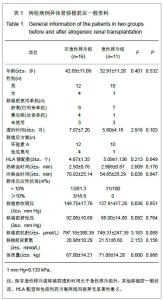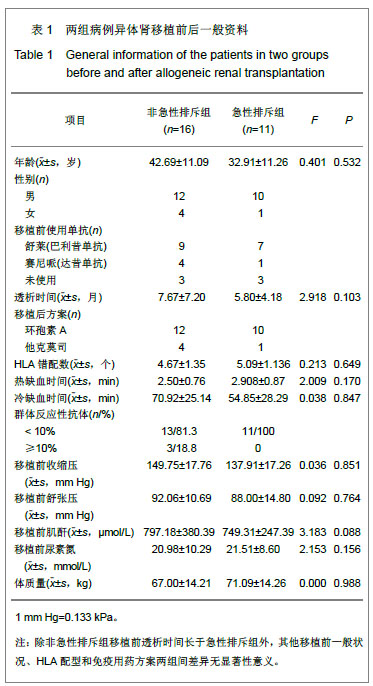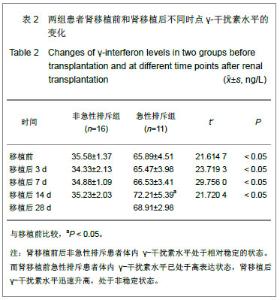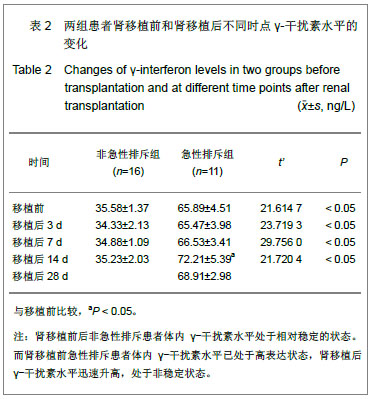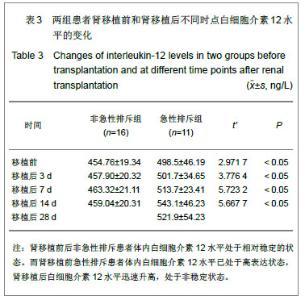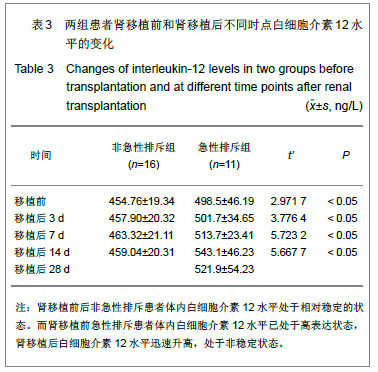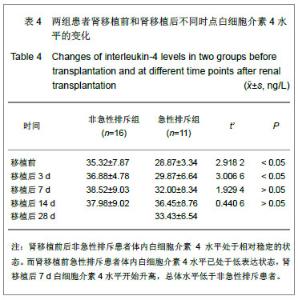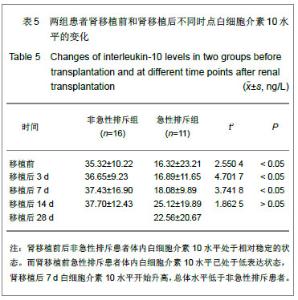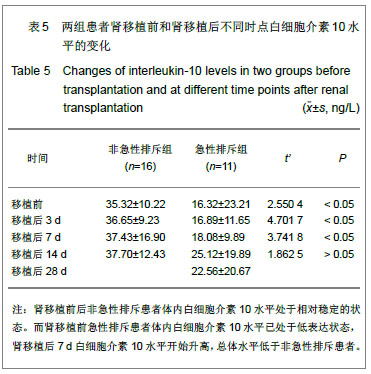| [1] |
Yang Zhiwei, Liu Junchang, Gao Xiaolin, Jiang Taimao.
Relationship between tacrolimus metabolic rate and early BK virus infection after kidney transplantation
[J]. Chinese Journal of Tissue Engineering Research, 2022, 26(5): 712-716.
|
| [2] |
Li Li, Zhuo Jin, Zheng Ling, Zhou Ling, Wang Qisong, Luo Lan, Luo Kai.
Effects of different induced polarization methods on the proliferation, apoptosis and phagocytosis of rat bone marrow-derived macrophages
[J]. Chinese Journal of Tissue Engineering Research, 2021, 25(25): 4032-4037.
|
| [3] |
Wang Xiaobo, Wang Changan, Han Jianle, Yang Qingyan, Yang Shuaiping, Yang Junwei.
Influence of conversion from cyclosporine to tacrolimus on glucose metabolism and cardiovascular risk profiles in stable kidney transplant patients
[J]. Chinese Journal of Tissue Engineering Research, 2021, 25(14): 2236-2240.
|
| [4] |
Liu Junchang, Gao Xiaolin, Jiang Taimao.
Correlation of CY3A5 genetic polymorphism with concentration/dosage of tacrolimus and individualized administration of tacrolimus after kidney transplantation
[J]. Chinese Journal of Tissue Engineering Research, 2021, 25(11): 1740-1744.
|
| [5] |
Guo Juan, Zheng Shan, Xie Hui, Hu Yahui.
An analysis of pathogenic bacteria infection in 422 kidney transplant recipients
[J]. Chinese Journal of Tissue Engineering Research, 2020, 24(32): 5198-5202.
|
| [6] |
Liu Luhao, Fang Jiali, Zhang Lei, Li Guanghui, Xu Lu, Lai Xingqiang, Xiong Yunyi, Chen Rongxin, Ma Junjie, Chen Zheng.
Clinical assessment criteria of donor pancreas transplants for simultaneous pancreas-kidney transplantation
[J]. Chinese Journal of Tissue Engineering Research, 2020, 24(26): 4157-4161.
|
| [7] |
Yang Jin, Zhang Meixia, Yan Pei, Cheng Qiao, Li Jianzhen .
Meta-analysis of risk factors for new-onset diabetes mellitus after kidney transplantation
[J]. Chinese Journal of Tissue Engineering Research, 2019, 23(15): 2450-2460.
|
| [8] |
Yang Qi-shun1, Jiang Wei1, Huang Chi-bing2.
Staging diagnosis and treatment for pulmonary infection after renal transplantation can improve the stability of transplanted renal functions
[J]. Chinese Journal of Tissue Engineering Research, 2018, 22(8): 1255-1260.
|
| [9] |
Li Yu-long, Huang Zhou-feng, Zhang Lei, Wu Cheng-ye, Cheng Wei, Dong Xiao-yan, Zhu Zun-min, Sun Kai.
The characteristics and significance of non-clonal chromosome aberrations in the in vitro expanded NK cells
[J]. Chinese Journal of Tissue Engineering Research, 2018, 22(33): 5362-5367.
|
| [10] |
Gong Yu-bo1, Liu Yong2, Zhao Hong-wei1, Xu Qian-qian1, Guo Hui-ling1 .
Expression levels of Foxp3 and indoleamine 2,3-dioxygenase in mouse corneal allograft rejection
[J]. Chinese Journal of Tissue Engineering Research, 2018, 22(28): 4513-4517.
|
| [11] |
He Yang, Lin Chen, Gao Qin, Song Jing-xiang, Tu Xiao-huang.
Lentivirus-mediated human interleukin-12 fusion gene-transfected rat bone marrow mesenchymal stem cells inhibit CT26 tumor growth
[J]. Chinese Journal of Tissue Engineering Research, 2018, 22(25): 3944-3949.
|
| [12] |
Zhang Xia, Du Zhi-xiang, Wang Na, Meng Ya-li.
Effect of interleukin-12 gene modified bone marrow mesenchymal stem cells on the growth of ovarian cancer cells
[J]. Chinese Journal of Tissue Engineering Research, 2017, 21(9): 1346-1351.
|
| [13] |
Zhou Jing, Bao Li-wen, Liang Jing.
Behavior improvement and inflammatory regulation in Parkinson’s disease rats after neural stem cell transplantation
[J]. Chinese Journal of Tissue Engineering Research, 2017, 21(33): 5299-5304.
|
| [14] |
Shang Wen-jun, Wang Zhi-gang, Suo Jing-jun, Li Jin-feng, Pang Xin-lu, Feng Yong-hua, Liu Lei, Xie Hong-chang,Feng Gui-wen.
Caspofungin for preventing fungal infection after kidney transplantation using donation after cardiac death donors: a prospective controlled trial
[J]. Chinese Journal of Tissue Engineering Research, 2017, 21(32): 5189-5196.
|
| [15] |
Yang Jin, Fang Fang, Yang Fu.
Risk factors for new-onset diabetes mellitus after kidney transplantation: a retrospective study
[J]. Chinese Journal of Tissue Engineering Research, 2017, 21(20): 3275-3280.
|
